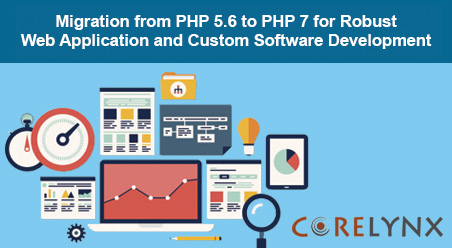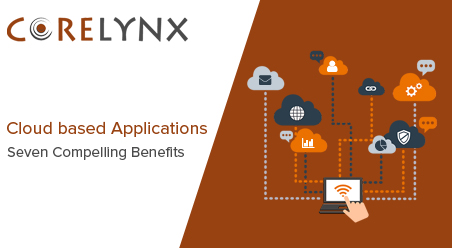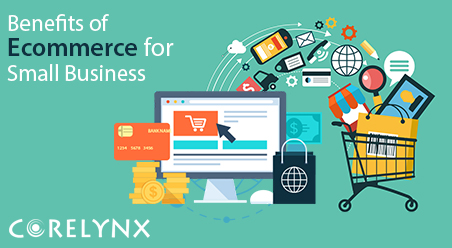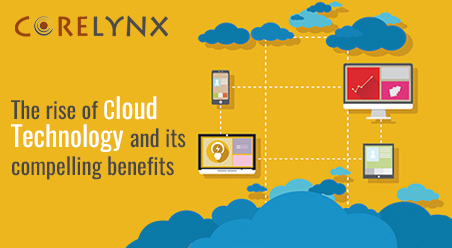Electronic Commerce, also known as eCommerce defines purchasing and selling of products or services over the Internet. The last decade has witnessed an explosion of eCommerce websites with many small businesses developing their online stores. This massive integration of web commerce as an integral part of the operations has made many experts proclaim it as the most dominant force in the modern world of technology to revolutionize the way small businesses are functioning.
So, what is fueling this new trend? What are the compelling eCommerce benefits that have driven small business entrepreneurs to create online storefronts? Let’s find out –
The evolution of eCommerce
For all these years we have followed the standard retail practice that involved visiting brick and mortar stores to buy anything. However, the onset of internet has dramatically transformed the way we engage with businesses and buy their products and services. Just like internet has given us the convenience to search and extract any information from anywhere, similarly it has left us with the urge to shop online.
And to cater to this requirement, the concept of eCommerce technology has come up which empowers consumers to buy products or services from their home at any time of day or night. In a flash, online has become the most preferred medium of shopping because it is quick, convenient and user-friendly. Consumers are saving time and money by searching and purchasing products online.
What do the statistics say?
The best example to showcase the unprecedented popularity of online shopping is the 2014 holiday season. According to an article in Inc, online retailers experienced highest profit and traffic in the 2014 holiday season. In the lieu of greater product selection, fast shipping and simple cost comparisons, consumers chose to shop maximum of their products online.
While 36 percent of U.S. shoppers and 45 percent of U.K. shoppers shopped online back in 2013, this figure doubled where 61 percent of U.S. and 71 percent of U.K. consumers shopped majorly online in 2014.
The number of online shoppers is increasing every year where most consumers are eschewing brick and mortar stores for online shopping sites. Looking at these statistics experts predict the eCommerce industry to grow by leaps and bounds in the future.
The entry of Small Businesses into the realm of eCommerce
Initially many small business owners only waded into the waters of web commerce, but the scenario has gradually changed now. Small businesses have realized the importance of eCommerce. They know that while for consumers the benefits of shopping online are plentiful, for retailers, eCommerce advantages are equally abundant.
This is precisely the reason that many small businesses are now running their online stores in addition to having a physical storefront. eCommerce websites are providing small businesses a comprehensive range of benefits. The key ones are listed below.
eCommerce benefits to Small Business
1. Low Operational Costs
Among all the eCommerce benefits to small business, this one is the most crucial. Running an online store involves less money compared to running a brick and mortar shop. That is because in a physical store, owners have to invest in purchasing business premises. Store location is a key factor; hence preference to get a space in a posh area with the targeted audience shoots up the cost.
On the contrary online stores do not come with location and any other overhead costs. They require very little capital outlay. Hiring even the best eCommerce website development company involves a moderate investment and does not takes up the cost as high as purchasing a physical store. The profit made from selling to customers online easily compensates the cost of designing and developing the e-store.
There is a lot of additional savings made as unlike physical stores where staff is required to handle inventory, checkout, payments and delivery, eCommerce automates the entire operational process. So overall, opening up an online store is a lot more economical and reasonable for small and medium-sized business owners who grapple to operate and grow with limited finances. They do not have to invest in the physical store, insurance or infrastructure but just need a well-designed website to sell products and services.
2. Increased Revenue
This comes second in the list of all eCommerce advantages. Physical stores, no matter how popular are limited by the geographical area, but with an online store, the whole world becomes the playground. Small business owners do not have to solely depend on foot traffic and can sell their products and services across the world. They can capture new audiences which they wouldn’t be able to reach otherwise. This drives conversions and sales and the small business experiences a new level of growth.
Not to forget that unlike brick and mortar stores, e-stores are open 24*7/365. So basically the business never shuts down and customers can purchase products whenever and wherever they want. This round-the-clock availability dramatically increases sales. Moreover, this advantage precisely explains why eCommerce is important for businesses, particularly the small and medium sized ones.
3. Greater Customer Acquisition
Traditionally retail relied on branding and customer relationships. However things have drastically changed with online retail where potential buyers search for products and services online and land up in eCommerce websites they’ve never heard of. Search engines drive massive amounts of traffic to e-stores that result in more number of customer acquisition.
In addition to more sales, this process helps in boosting brand awareness. Small businesses do not have to constantly push out marketing messages, trying to attract people to the store. They just need to develop pages that can be indexed by search engine crawlers and paired with customers’ online search queries. This is one of the best ways to attract the target audience. Consistent SEO efforts ensure recurring monthly traffic that can be easily converted into a steady flow of incoming sales.
4. Social Recommendation
Impressed with the quality of products and services along with the overall shopping experience, majority of consumers voice their opinions and recommend e-stores to their friends on Facebook, Twitter, Pinterest, LinkedIn, Instagram, and more. This is an added advantage for the small businesses who provide better products and services than the big guys but fail to get customers because they are unknown.
Tremendous word of mouth recommendation over social media fosters customers to choose small business online stores over mega-marts. In this way small businesses who till now were way behind their larger counterparts are able to lock down the buyers with superior quality product and service offerings and personalized shopping experiences delivered through eCommerce solutions.
5. Customer Buying Analytics
In a usual mom-and-pop shop it is impossible to study customer buying habits. Small businesses have to build customer persona based on vague assumptions and perceptions than actual data. Needless to say, these insights are not that effective and hardly help in improving sales and marketing strategies.
Online stores empower small businesses to keep a constant eye on customers’ buying habits and interests. Questions like below are precisely answered:
- Which are the most popular products?
- When do customers buy the most?
- What kind of discounts, deals and offers motivate customers to buy?
Based on these crucial insights, small businesses tailor their offerings and offer personalized experience to match customers’ requirements. They satisfy customers needs consistently, sell more efficiently and build long-lasting relationships with them.
Not to forget that Google Analytics is there which provides more additional information on visitor tracking and statistics. SMBs utilize this and find out:
- How are customers finding about the eCommerce service?
- Which geographical regions do the visitors belong to?
- Which sections are visited most in the website?
- What is the merchandise browsing patterns?
6. Online Presence
Customers prefer eCommerce solutions and expect businesses to be available online. Small businesses who have dedicated online storefronts stay strongly in the competition and prevent their audience from flocking toward the competitors to make online purchase.
7. Full advantage of Customer Advocacy
Irrespective of how popular a small business is, it is not able to take full advantage of its loyal customers. Even though customers endorse the store, it all happens verbally. Sales through word of mouth recommendation depends on what extent and how frequently is the store endorsed.
In an e-tail store – word of mouth recommendation is much easy and more effective! Customer reviews and testimonials are right there in the website placed in the most visible position. New visitors as they come in get influenced by these testimonials, reviews and product ratings. Trust is immediately built and not much persuasion is required about the quality of products and services.
8. Larger Marketing ROI
Just like sales, the marketing activities of physical stores are limited by geographical boundaries. However, with an online store, the whole world becomes the target audience. Small business owners do not have to solely depend on the local people to see their marketing messages and come to the store. They can advertise their product and service offerings worldwide and bring in domestic and international customers.
Old marketing tactics give way to newer ones such as email marketing. While in physical stores, it is impossible to get email addresses of every customer/visitor, online stores realize this easily. In all likelihood, SMBs obtain email addresses of all their customers and visitors. Using the customer browsing and buying behavior, they send targeted marketing messages.
Final Thoughts
E-tail store is a necessity for today’s small businesses. It levels the playing field for SMBs and allows them to punch far above their weight in attracting customers worldwide. Experts have realized eCommerce benefits to small business and proclaimed eCommerce websites as the best strategy for them.
If you’re still on the fence about the importance of eCommerce or do not know how to go about developing your own online store, talk to us.
We at Corelynx specialize in providing eCommerce solutions for business of all sizes. As a renowned eCommerce website development company, we have handled multiple web commerce projects and have the experience to thoroughly analyze your operational process and successfully map your small business requirements to an eCommerce website that fosters better buyer engagement and faster sales conversions.







